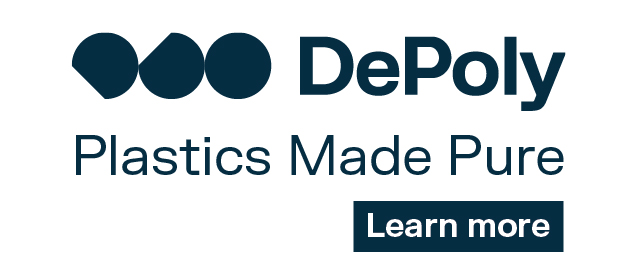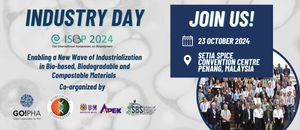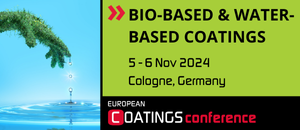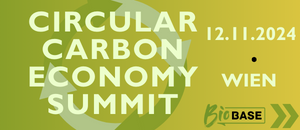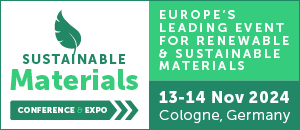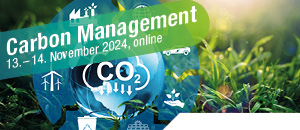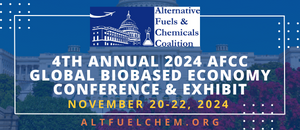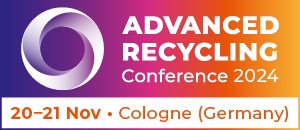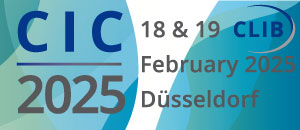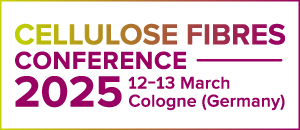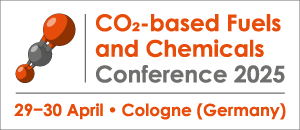This year, 14 new biobased polymer composite footbridges made by FiberCore will be installed in the port of Rotterdam, bringing the total to 22. “This project perfectly aligns with our sustainability ambitions. The realisation of the bridges demonstrates how as a Port Authority, we are investing in sustainable innovation in the region. Through such initiatives, we hope to stimulate other companies to follow suit,” says Port Authority project manager Matthijs Tromp.
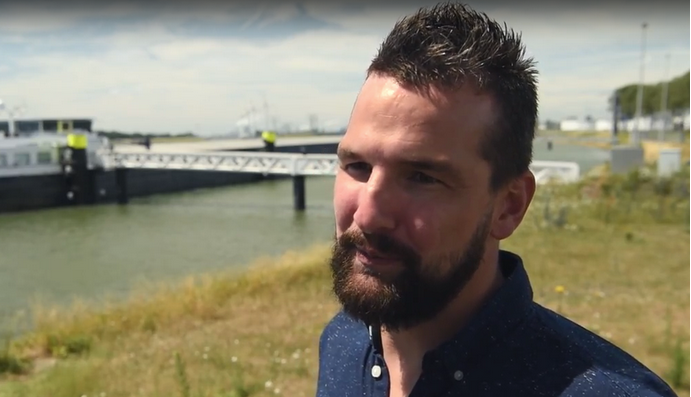
The footbridges – which have a truss bridge design – consist of units made from fibreglass and resin, among other things. Twenty-five percent of this resin is biobased. But technical developments haven’t stopped there. “We can presently increase the share of bioresin to 45 percent without sacrificing any mechanical properties,” says Ed Hoogstad, Director Operations COO at FiberCore Europe. “The project also promotes the current energy transition, thanks to its positive contribution to the reduction of CO2 emissions,” continues Tromp.
In 2010, the Port of Rotterdam Authority contacted FiberCore Europe with the question whether they could develop a low-maintenance and sustainable alternative for the steel truss bridges in the port area. “Steel bridges have to be removed from their site after 25 years, for re-blasting and a preservation coat. In addition, you have to monitor possible damage to the preservation coat to prevent corrosion (rust). After they’ve been refurbished and reinstalled, the bridges should last another 25 years. But after that, metal fatigue basically means the end of their useful service life, and it’s back to the furnaces for them,” explains Simon de Jong, founder of FiberCore Europe, at the firm’s headquarters close to the production location in Rotterdam. In consultation with the Port of Rotterdam Authority, FiberCore has set ambitious goals for itself – first and foremost, the design of bridges with a guaranteed lifespan of at least 100 years, combined with next to no maintenance requirements.
Alternative to steel bridges
“Ever since our establishment in 2008, FiberCore has taken a different approach to infrastructure,” says De Jong. “We construct bridges using composites, as an alternative to concrete, wooden and steel bridges. Our technology comes from the aviation and aerospace industries. My partner Jan Peeters originally worked in aircraft construction and is very familiar with these sectors. Working together with Rijkswaterstaat’s Civil Engineering Division, Jan realised Europe’s first composite bridge in 1997. This ‘scoop’ ultimately led to the InfraCore technology, which has been patented worldwide. With InfraCore, the often destructive problems caused by delamination and crack formation are a thing of the past. This means that even when a bridge is subjected to external mechanical stresses – caused by a heavy object falling on the deck, for example – the material retains its full original structural strength. Delamination and crack formation pose a substantial problem for the incorporation of polymer composites in bridge construction. InfraCore is the only technology that can avoid these issues.” After realising hundreds of cycle bridges and footbridges, FiberCore presently also builds lock gates and bridges for the heaviest road traffic.
Integrated cable systems
FiberCore’s first composite bridge for the Port Authority consisted of two sections with innovations that clearly distinguish it from the steel bridges: integrated cable systems, integrated lighting and a bright white finish that makes the structure highly visible for approaching vessels. The latter feature is also important in connection with safety. This bridge was constructed on site in 2012 and tested for a full year. Hoogstad calls it a ‘plug en play’ bridge: an easy-to-install structure that will not only last for at least a century but also has very low maintenance requirements. “You could say the only maintenance you have to perform on this bridge is clean off the gull droppings and replace the LEDs every now and then,” says Tromp.
Wider span
After a year of testing, the Port Authority wanted to continue with the development of the composite footbridges – but then at 1.5 times the original span. A feasibility study indicated that this was possible in technical and economic terms. A wider span removes the need for a pile abutment in the slope. “You don’t want to be driving a pile in the critical part of the slope, since this can create an ‘avalanche risk’. And in some cases, it requires an EOD investigation to find unexploded bombs from the Second World War. Those cost about as much as the bridge itself,” says De Jong.
Cherry on the cake: bioresin
Besides realising a wider span, FiberCore had the ambition to develop an even more environmentally-friendly construction process. As it is, composite bridges already form a ‘green’ alternative to their steel counterparts, since they are easier to transport thanks to their low weight and have a far longer service life. But there were other wins to make besides. “Using bioresin: that was truly the cherry on the cake for us,” says Hoogstad. The share of bioresin in the composite bridges presently stands at 25 percent. And recent consultation between FiberCore and the supplier made it clear that this share can even be raised to 45 percent – without sacrificing any mechanical properties. But FiberCore can also raise the bar in another area, by replacing the fibreglass components in the composite bridge with basalt. You can find slopes full of this material, Tromp informs us. But the company would have to purchase this basalt in sufficient bulk, since it is a relatively expensive raw material. To make it an interesting option in economic terms, FiberCore has to wait for a growth in demand: a batch of 15 bridges.
Source
Port of Rotterdam, press release, 2017-07-14.
Supplier
FiberCore
Port of Rotterdam
Rijkswaterstaat
Share
Renewable Carbon News – Daily Newsletter
Subscribe to our daily email newsletter – the world's leading newsletter on renewable materials and chemicals





